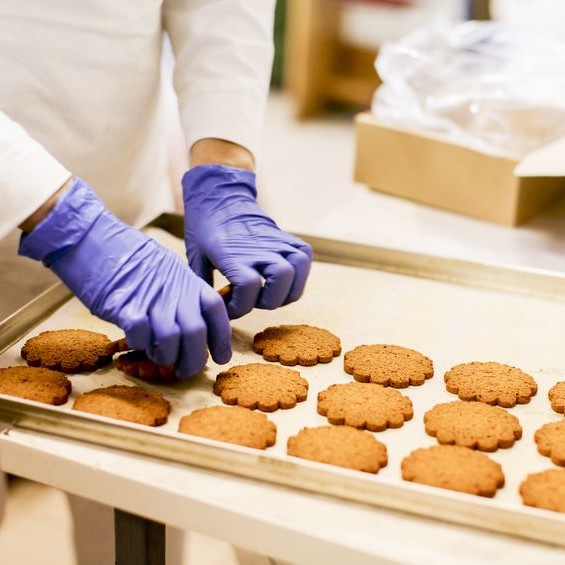Regulatory Overview
What is Regulatory Overview?
Regulatory overview deals with the regulatory landscape concerned with food safety. Maintaining clear food safety guidelines allow bakers to take proactive and preventive measures to manage risks associated with everyday operations.
Aspects involved in food and bakery regulatory landscape include:
- Good manufacturing practices and plant hygiene prerequisite programs
- HACCP (HACCP plan)
- FSMA
- Kill step calculator
- Food Defense
- Food labeling
How does it work?
The regulatory overview for food safety might be tricky and is often complex but nothing is more important than offering safe food products to consumers while maintaining efficient production operations.
FDA rules do not change much in short periods of time but once they are revised and updated. Some aspects change drastically and bakers must understand the details of such changes and make all the necessary corrections and adjustments to ensure regulatory compliance and avoid negative market consequences.
Good manufacturing practices and prerequisite programs
Any food safety system starts with a solid foundation of programs that manage the basic environment hygienic conditions where safe food can be produced. These programs set the stage for the facility and its workers to comply with good manufacturing practices (GMPs).1
Without GMPs, it would be challenging for bakeries to ensure a safe food processing environment. Such principles and practices are implemented through a series of prerequisite programs (e.g. cleaning and sanitation programs).
HACCP (food safety management system)
This food safety system is focused on critical control points and operational prerequisites identified through hazard analysis as being essential to maintain food safety of the products and food processing environment. To properly execute the principles of this system, a detailed HACCP plan needs to be documented and implemented. This plan is the playbook for the bakery to make sure the system is working properly.
FSMA (food safety management system)
The keystone of FSMA, like HACCP, is the development of risk‐based preventive controls for food facilities. Bakeries are required to develop and implement written plans for preventive controls and for recall which involve:
- Evaluating hazards that could affect food safety
- Specifying what preventive steps, or controls, will be put in place to significantly minimize or prevent the hazards
- Specifying how the facility will monitor these controls to ensure they are working
- Maintaining routine records of the monitoring
- Specifying what actions the facility will take to correct problems that may arise
The Final Rule for Preventive Controls for Human Food implements FSMA requirements for food manufacturers to establish. It also calls for implementing a food safety system that includes sanitation programs, hazard analysis, and risk‐based preventive controls. Specifically, the rule establishes requirements for:
- A written food safety plan
- Hazard analysis
- Preventive controls
- Monitoring
- Corrective actions and corrections
- Verification
- Supply chain program
- Recall plan
- Associated records
Kill step calculator
The FSMA Final Rule for Preventive Controls for Human Food (21 CFR §117.155 and 21 CFR §117.160) mandates food processing companies to verify and validate any kill-step applied to guarantee the safety of food products (e.g. baking in oven).
These verification and validation activities must be carried out to ensure that preventive controls are consistently applied and effective in controlling the hazards identified by the establishment.
Food defense
A food defense program or system focuses on protecting food and food processing environment from intentional contamination by biological, chemical, physical, or radiological agents that are not reasonably likely to occur in the food supply.3
Food labeling
In 2016, the FDA made major changes to the nutrition facts labels for packaged foods and supplements. The rule 21 CFR Part 101 regarding food labeling was revised to help consumers maintain healthy dietary practices.
Some aspects of the nutrition facts label that changed include:3
- Declaration of the gram amount of ‘‘added sugars’’ in a serving of a product, establishment of a Daily Reference Value (DRV), and requirement of the percent Daily Value (DV) declaration for added sugars. This to help consumers know how much sugar has been added (during processing stage) to the product.
- Declaration of calories per serving is now required to be bolded and larger.
- Serving sizes were updated to better reflect how much people actually eat.
- New considerations for calculating added sugars.
- New considerations regarding dietary fiber.
- Mandatory declaration of vitamin D and potassium, in response to modern health concerns (in micrograms and milligrams). Declaration of micronutrients calcium and iron remains mandatory.
- Declaration of vitamin A, vitamin C is now optional.
- Removing the declaration of ‘‘Calories from fat.” Current science supports a view that the type of fat is more relevant than overall total fat intake in increased risk of chronic diseases.
References
- Barach, J.T. “What are the Essential Elements of a Food Safety System?” FSMA and Food Safety Systems: Understanding and Implementing the Rules, John Wiley & Sons, Ltd., 2017, pp. 21–33.
- Mitenius, N., Kennedy, S.P., and Busta, F.F. “Food Defense.” Food Safety Management: A Practical Guide for the Food Industry, Academic Press, Elsevier Inc., 2014, pp. 937–950.
- National Archives and Records Administration. Federal Register, Food Labeling: Revision of the Nutrition and Supplement Facts Labels, https://www.federalregister.gov/documents/2016/05/27/2016-11867/food-labeling-revision-of-the-nutrition-and-supplement-facts-labels. Accessed 15 February 2019.


